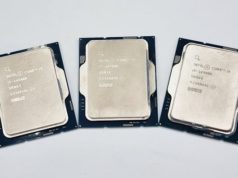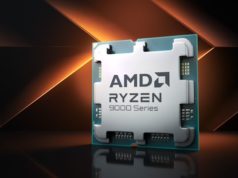Ubuntu versus Linux Mint
Ubuntu and Linux Mint are two of the best known desktop distributions around. Both are extremely popular with Linux users, but which one is better? Since each of these distributions has much to offer it can be difficult to choose between them. Fortunately, a writer at Linux and Ubuntu has a helpful comparison between Linux Mint and Ubuntu.
Mohd Sohail reports for Linux and Ubuntu:
Both Ubuntu and Linux Mint have a lot going for them and choosing one over the other. The main difference between the two is how they are implemented in terms of the User Interface and support. Between the default flavors, (Ubuntu Unity and Mint Cinnamon),it is not easy recommending one over the other. Ubuntu suffered a great deal of backlash due to Unity even though it is considered the more modern of the two, whilst Cinnamon is considered the more traditional but looks a bit old-fashioned.
Canonical has done a great job at keeping Ubuntu stable and secure. They also try well to keep their official packages as new and updated always. They lay down their own infrastructure (that Mint relies on). They provide a go-to point for transitioning OS users and companies.
But Mint’s desktop and menus are easy to use whilst Ubuntu’s dash can be sort of confusing especially for new users. It’s the gate that ex-Windows users walk through and as such is the most welcoming to such persons. Mint gives more in terms of the pre-installed software but finding and installing software from Ubuntu’s Software Center can be a little more easier.
So I’m choosing Mint over Ubuntu, but don’t get me wrong, Ubuntu with Unity is awesome once you know what you are about. But with Canonical chasing unification of the desktop and mobile with Unity 8, I do belive Linux Mint in its current state is wee bit superior to Ubuntu. Mint is possibly “Ubuntu done better”. Overall, Linux Mint with Cinnamon feels far more polished than Ubuntu with Unity.
More at Linux and Ubuntu
The comparison of Ubuntu and Linux Mint drew some comments from readers of the blog:
Bolski: “Love Ubuntu and you have choices. Unity is not for me and to me, what they are attempting to do is what Microsoft failed at with Windows 8: a unified desktop for mobile and PCs. The problem is, PCs are NOT mobile touch devices. In fact, both my daughters have touch-screen devices (one an ASUS netbook with Windows 10, the other an iOS MacBook). I cannot stand the touch screen. It just doesn’t work.
I understand what they are trying to do with Unity. I really do and I commend them for it, but it also feels restrictive at times, which is something I like about Linux in general and the other desktop environments. The ability to customize the desktop to your whim. To me, it’s one thing to give a “unified” desktop, but it’s completely a different thing when it’s restricted in what you can customize. That to me does go against the “freedom” of Linux. Of course, others will argue about Mint including proprietary software by default. Some don’t even think they should be allowed the be installed. That also is restricting the “freedom” that Linux is supposed to offer. I remember way back when when I was using Linux when it first started coming out how great it was to finally have Unix on my personal PC at home. Then years later, people screaming for vendor support for hardware, etc. Now we have it, and we have people saying not to use it. Makes me scratch my head. In the end, choices. You can choose to install said proprietary software or not, but don’t limit the access to those who want it.
But great article and it shows that either distro is a good choice depending on what you want, and what is nice is, even with Ubuntu’s default Unity distro, you can easily installed KDE, XFCE, Cinnamon and other desktop replacements, or just choose the correct distro desktop config ISO and install it that way. Choices are nice to have. Unity is just not for me, even though I grew to accept it, but I like Cinnamon better, but that’s just me. Try them all out and decide for yourself. Everyone has different tastes, as this article explains, but you cannot go wrong with Ubuntu or Mint. Both are excellent choices.”
Harmlessdrudge: “I’ve used both of these for years. 1 point in 100 explains the difference in popularity? I don’t think so.”
SteveA: “I prefer Mint to Unity, not only for myself for for “new” users.
I’ve used Gnome 3 Shell, which has a similar “feel” to Unity, and I liked it very well, but it has a learning curve in getting to understand the launcher and menu system. I found using different workspaces a big advantage when using Gnome 3 or Unity. Just my two cents. Good review!”
Rouillardjos: “I guess Mint with a more “windows” like interface win for the vast majority of users (between those two at least) The Distrowatch.com preferred distro count has spoken.”
Jymm: “What about Ubuntu Mate? Mate is my preferred desktop.”
More at Linux and Ubuntu
DistroWatch reviews elementary OS 0.4 Loki
elementary OS has long been known for its simplified GUI which features the Pantheon desktop. DistroWatch did a review of elementary OS 0.4 and came away with mixed feelings about the overall experience.
Jesse Smith reports for DistroWatch:
I had very mixed impressions of elementary OS 0.4 and I’m still not entirely sure how I feel about the distribution after a week of use. Early on I encountered a lot of little issues. The distribution did not play particularly well with either of my test environments, giving me video issues on the desktop and both performance issues and interface problems in VirtualBox. The software manager locked up on me and prompted for my password a lot during the first few days I was using the distribution while I added extra applications. The Pantheon desktop does offer some flexibility, but not the level of customization I’m used to from Plasma, Lumina or MATE and I missed that sometimes. Earlier I mentioned when a user cannot login (whether from an incorrect password, parental blocks or locked account) there is no visible error message which I suspect will aggravate some users. Having the Epiphany browser segfault for a day only to resume working the following day fed the impression that elementary was unpolished.
While the above aspects of the distribution bothered me, I have to give a good deal of credit to the developers for doing a lot of things well. elementary really does have an unusual desktop design compared with most other Linux distributions and I think the developers are doing a great job of designing a newcomer friendly interface. There is a strong sense that this desktop was designed with former OS X users or current Android users in mind. Looking at the application menu grid and the AppCenter in particular, there is a very mobile-like familiarity. The control panel is fairly similar to what we might find when running the MATE or Cinnamon desktops, but again there is a style present which I think will feel familiar to anyone who uses a smart phone.
The elementary application menu is pleasantly uncluttered and this is probably a good thing. The developers seem to be relying on the AppCenter to deliver additional applications and I think it is an approach which will work for them.
Right now my overall opinion of elementary OS 0.4 is that there are some great design ideas at work, but a lot of rough edges in the implementation. Looking at the desktop, its layout and especially when looking at the well organized (and mute-able) notification area, it’s clear a lot of thought has gone into the design. However, I ran into several lock-ups or glitches which would probably turn away the newcomers this efficient design is going to attract. Hopefully the problems I ran into will be worked out in time for the next release, because I like the style and approach elementary OS is taking.
More at DistroWatch
Linux Mint 18.1’s new features
The Linux Mint developers have been working hard to finish version 18.1, which should be released by the end of the year. Linux Mint 18.1 has been dubbed “Serena” by its developers, and a recent post on the Linux Mint Blog has some interesting information about its new features.
Clem reports for the Linux Mint Blog:
Linux Mint 18.1 was given its official codename today. It will be called “Serena” and it should receive its new repositories in the coming days. MATE 1.16 is out already and Cinnamon 3.2 is just around the corner.
Linux Mint 18.1 should be released in November/December 2016 and it will be supported until 2021. Upgrades from Linux Mint 18 to Linux Mint 18.1 will be handled by the Update Manager. They will be both safe and easy to perform.
One of the most visible changes in Cinnamon 3.2 is the removal of “box pointers.” Applet and desklet menus look different than before. They lost that gap they previously had with the panel or the desklet, and that distinctive pointy link which they inherited from GNOME Shell.
In addition to showing you mirrors based on your location, the Software Sources tool now supports “worldwide” mirrors. These mirrors are anycast IP global mirrors, i.e. they have servers in different regions of the World and redirect your requests to the one that is closest to you.
Support for languages was also improved. Language pack detection now checks for spell checkers, fonts and a variety of other packages. The selection and installation of input methods was also completely redesigned. You now choose which language you’re interested in, and this installs support for typing in this language and recommends methods to select.
More at the Linux Mint Blog
Did you miss a roundup? Check the Eye On Open home page to get caught up with the latest news about open source and Linux.
This article is published as part of the IDG Contributor Network. Want to Join?







